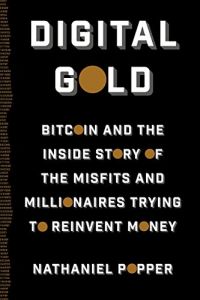New York Times reporter Nathaniel Popper offers up an inviting, necessary history. The concept behind Bitcoin – a completely electronic currency that isn’t backed by anything in the physical world – is intriguing. Its story is filled with pseudonyms, criminal activities, selfless dedication, incredible hubris, international travel, technological breakthroughs, and, of course, money. Bitcoin went from idea to reality in just a few years – and much of its development occurred inside underreported groups, like chat rooms and the libertarian community. Popper narrates this complex saga with ease and grace. getAbstract recommends his overview and its vivid personal portraits to those intrigued by Bitcoin, international finance, cyberculture, cybercrime, alternative cultures or libertarian thinking.
Bitcoin’s Origins and Principles
Online chat rooms began mentioning Bitcoin in 2008. Some people who were active in chat rooms, including computer programmer Hal Finney, received emails from someone calling himself Satoshi Nakamoto. He described Bitcoin as “e-cash” – a completely electronic currency that didn’t need backing from a bank, government or other organization. Instead, it would live in users’ “collective computing memory.”
The person using the name Nakamoto claimed that people could use Bitcoin without leaving any “identifying information” that governments could track. In January 2009, Finney downloaded a program that created or captured virtual currency increments – Bitcoins. When computers on the network solved a “computational puzzle,” they won 50 Bitcoins.
Finney was part of online communities that discussed ways to reshape society and help people maintain privacy in a technological age. Mathematicians at MIT and Stanford made it possible for ordinary people to encrypt messages, something only large institutions could previously do. This “public-key cryptography” used public and private keys to safeguard privacy. Bitcoin applies this technology ...









Comment on this summary